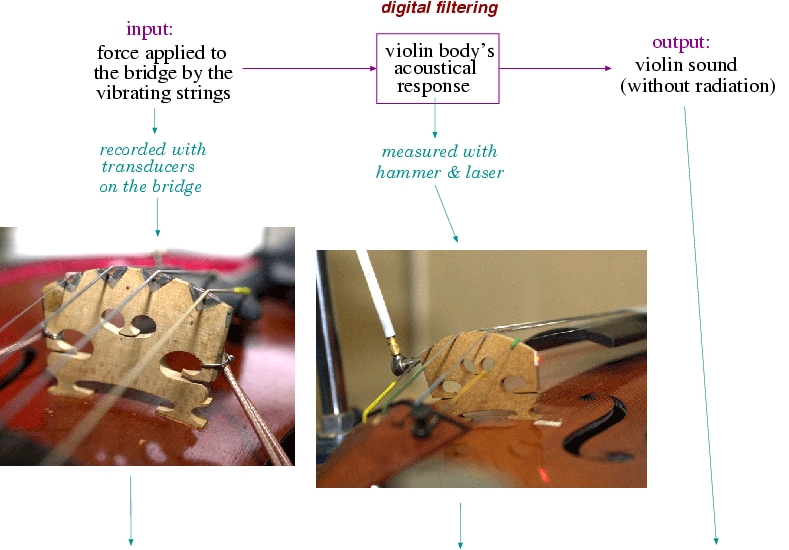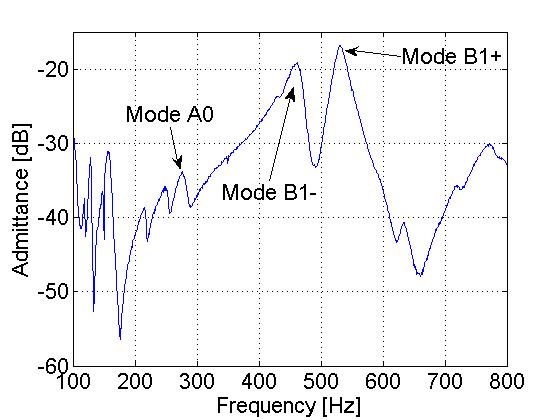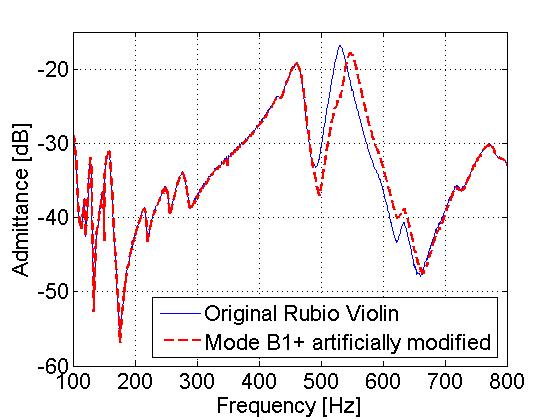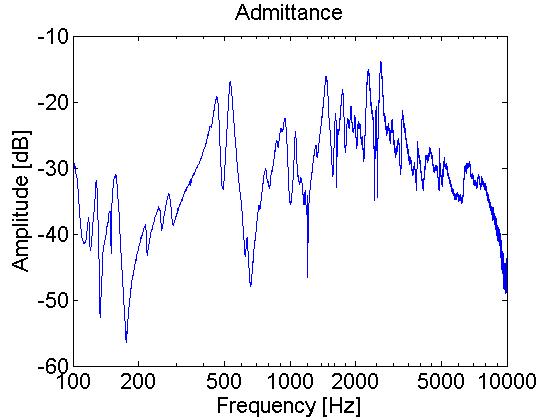Aim of the project:
Answer the typical question that a violin maker will ask: ``Why does this instrument sound so much better and nicer?''.
As this is a very hard question, we will start by answering the following one: ``What will happen to the sound if I change slightly such-and-such a constructional detail?''

Our study will therefore focus on the psychoacoustic phenomena.
Principle

| |
|
Method
We design virtual violins which differ from a reference violin only by small changes.We are first interested in the shift in frequency of the modes A0, B1- and B1+:


We then filter a given pre-recorded bridge signal by these different violins and ask people if they can distinguish them to get the just noticeable difference for each modification. This is done by using a 3 alternative forced choice method, a standard psychoacoustic procedure. Basically, subjects have to listen to three sounds in a row, two being identical, one different, and they have to tell which one is different. After 3 correct answers, the difference is reduced whereas it is increased after one wrong answer, so after a while, the difference tends to the threshold in perception.
Here is an example for a shift in frequency of 14% of the mode B1+, on two different notes: G (196 Hz) and E (330 Hz). It is hard to recognise the sound of a violin because the sounds have been made deliberately very short. Can you tell which sound is different in the two examples?
(Answer: the middle one in both cases)
The frequency of all modes in the four Duenwald bands (200-600Hz, 600-1000Hz, 1000-1600Hz and 1600-7000Hz) was as well shifted. Furthermore, a modifications of the amplitude of the singles modes and of all modes in each band was tested as well. The results are published in JASA and the paper can be downloaded from our publications page.
Updated November 2007
